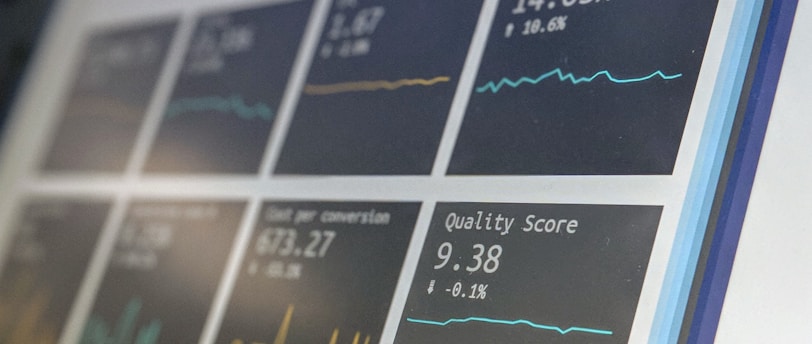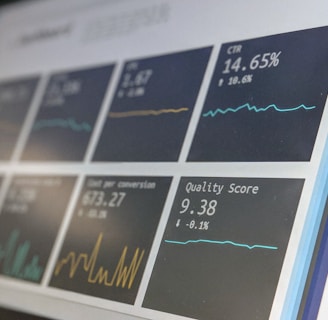The Ultimate Guide to Your First $150 Ad Spend
Afraid to start online advertising? 💸 Don't be! Our new blog shows you how to turn your first $150 ad spend into a powerful learning tool. Get our step-by-step guide to launch your first smart campaign and stop guessing what works. Read it now!
GETTING STARTED WITH DIGITAL MARKETING
Cai
8/26/20255 min read


The thought of spending money on online ads can be intimidating. Maybe you’ve heard stories of a small business that spent thousands with no results, or perhaps you just don't know where to start. But here's a secret: you don't need a huge budget to see real results. In fact, a small, strategic investment of just $150 can be a powerful learning tool that lays the foundation for all your future marketing efforts.
Think of your first $150 not as a gamble, but as a mini-research budget. You're not just buying clicks; you're buying valuable data that will teach you exactly who your customers are, what they respond to, and how to talk to them.
This guide will walk you through a simple, step-by-step plan for your first $150 ad spend. We'll cover everything from choosing the right platform to crafting your message and analyzing your results, all with easy-to-understand examples.
Part 1: The Mindset - Why a Small Budget Is Your Best Friend
Before we dive into the numbers, let's get the right mindset. Your first ad spend is about:
Learning, Not Just Earning: The primary goal isn't to get a massive return on investment (ROI) right away. It's to figure out what works. Which audience clicks your ad? Which message gets the most attention?
Testing Your Assumptions: You might think your customers are a certain age or live in a certain area. A small ad spend allows you to test those theories with real-world data.
Building a Foundation: The data you collect from this campaign will make your next campaign, whether it’s $50 or $5,000, exponentially more effective.
Part 2: The Plan - Before You Spend a Single Dollar
A successful campaign isn't about the money; it's about the plan. Don't skip these crucial steps.
Step 1: Define Your Goal What is the single most important thing you want this ad to achieve? Be specific.
Brand Awareness: I want people to know my business exists.
Website Traffic: I want more people to visit my website.
Leads: I want people to sign up for my email list or fill out a contact form.
Sales: I want people to buy a specific product or service.
Example:
Goal: A local plumber wants to get 10-15 calls for a free quote.
Goal: An online T-shirt shop wants to get 50 new people to visit their "Summer Collection" page.
Step 2: Choose Your Platform The two most popular choices for small businesses are Facebook/Instagram Ads and Google Ads. The best one for you depends on your goal and business type.
Facebook & Instagram Ads (For Discovery):
Best for: Visual businesses (bakeries, clothing, interior design), building brand awareness, and reaching people who don’t yet know they need you. This is for "I want to reach people who like baking" type of targeting.
How it works: You put your ad in front of a specific audience based on their interests, demographics, and behaviors.
Google Ads (For Intent):
Best for: Service-based businesses (plumbers, dentists, consultants), businesses with products people actively search for, and capturing a customer who is ready to buy right now. This is for "I want to reach people who are searching for 'plumber near me'" type of targeting.
How it works: Your ad appears at the top of Google search results when someone types in a specific keyword.
Step 3: Define Your Audience This is where you'll spend most of your time planning. Don't target too broadly ("everyone in my city"). Instead, create a specific persona.
Example:
Business: A custom cake baker.
Too Broad: Women in my city, age 25-50.
Just Right: Women, age 28-45, living within 10 miles, who are engaged or recently married, have liked pages related to wedding planning or baking, and have birthdays coming up in their family.
Step 4: Craft a Compelling Offer What is the "hook" that will make people click?
For Website Traffic: "See our new collection!" or "Download our free guide to [topic]."
For Leads: "Get a free quote!" or "Sign up for 10% off your first order."
For Sales: "Buy now and get free shipping!" or "Limited time only: 20% off all products!"
Part 3: The $150 Breakdown - Two Paths, One Goal
Here are two simple, 15-day plans to spend your $150 budget effectively.
Path A: The Facebook/Instagram Ad Plan
This plan is all about testing and refining your audience and message.
Budget Breakdown:
Ad 1 (Days 1-5): $50
Ad 2 (Days 6-10): $50
Ad 3 (Days 11-15): $50
Campaign Setup:
Days 1-5: The "Discovery" Ad ($50)
Goal: Traffic/Reach
Audience: The specific persona you created (e.g., "Molly the Mom").
Creative: A high-quality, eye-catching photo or a short 15-second video. The ad copy should be simple and introduce your business.
What you're learning: Is this audience even interested? You’ll check metrics like reach, clicks, and engagement (likes/comments).
Days 6-10: The "Offer" Ad ($50)
Goal: Conversions (or Leads/Sales)
Audience 1: A "custom audience" of people who engaged with your first ad. They already know who you are, so they’re more likely to click.
Audience 2: A "lookalike audience" of your current customers. Facebook finds people similar to your best clients.
Creative: A different image or video from the first ad. The ad copy should include your compelling offer.
What you're learning: Which of your two audiences converts better? Which ad creative generates the most clicks?
Days 11-15: The "Winner" Ad ($50)
Goal: The same as your best-performing ad in the previous stage (Traffic or Conversions).
Audience: Put the entire $50 toward the audience from the previous stage that performed the best.
Creative: Use the ad creative that got the most clicks and engagement.
What you're learning: You’re now putting your money toward what you’ve learned is working. This is where you’ll start seeing the best results from your initial $150 investment.
Path B: The Google Ads Plan
This plan focuses on capturing high-intent traffic with specific keywords.
Budget Breakdown:
Ad Group 1 (Days 1-5): $50
Ad Group 2 (Days 6-10): $50
Ad Group 3 (Days 11-15): $50
Campaign Setup:
Days 1-5: The "Keyword Test" ($50)
Goal: Website Traffic
Ad Group 1: Create 3-5 very specific keywords (e.g., "affordable home plumbing," "emergency plumber services," "clogged drain repair").
Ad Copy: Write 2-3 different versions of your ad for each keyword. Something like "Need a Plumber? We're a Call Away."
What you're learning: Which keywords are getting clicks? Which ones are costing a lot but not performing?
Days 6-10: The "Refine" Ad ($50)
Goal: Website Traffic
Ad Group 2: Pause the keywords that are not performing well. Increase the budget on the top 1-2 keywords that are getting the most clicks.
Ad Copy: Pause the lowest-performing ad copy and create a new version to test against your current best-performer.
What you're learning: You're starting to get a clear picture of what your potential customers are searching for and what language makes them click.
Days 11-15: The "Winner" Ad ($50)
Goal: The same (Website Traffic or Leads/Calls if you've set that up).
Ad Group 3: Put the entire budget toward your single best-performing keyword and the ad copy that's generating the most interest.
What you're learning: You've now found your winning combination. You can be confident that if you invest more money in this ad and keyword, it will likely lead to good results.
Part 4: What to Do After the Campaign
The campaign is over, but the work isn't. Take the time to analyze your results.
Facebook/Instagram: What ad got the most "click-throughs" (clicks divided by impressions)? Which audience was the most engaged? Use this data to inform your next campaign.
Google Ads: Which keywords brought the most traffic? How much did you pay for each click? Were those clicks high quality (did they visit more than one page on your site)?
Final Takeaway: Your $150 Paid for a Priceless Lesson.
Your first ad spend isn't about hitting a home run. It's about getting on base. It's about using a small amount of money to get valuable data that you can use to make smarter decisions in the future. Honorary mention for Yelp Ads that help People connect with great local businesses.
The next time you’re ready to run an ad, you won’t be guessing. You’ll have a clear, data-driven plan based on what you learned from your first $150 investment. That’s a return on investment that money can’t buy.
Innovate
Discover simple hacks to elevate your everyday life!
Explore our blogs for practical tips to enhance and to help with your life journey .
From time-saving tricks to mindset shifts, we’ve got tools to help you thrive in every area of life.
Start exploring and make your everyday feel easier, more intentional, and more empowered.
Connect WITH ME
help@caixhi.com
© 2025.CAIXHI
